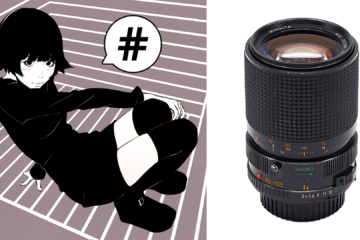Minolta MD 28mm 1:2.0 vs MD 28mm 1:2.8(7×7) vs MD 28mm 1:2.8(5×5) vs MD 28mm 1:3.5 – comparison v2

Minolta MD 28mm lenses comparison v2: Minolta MD 28mm 1:2.0 vs MD 28mm 1:2.8(7×7) vs MD 28mm 1:2.8(5×5) vs MD 28mm 1:3.5 – all are MD III
The first battle of 28mm Minolta MD III lenses was the very first lenses-comparison on this site. That time I had copies of MD 28mm 1:2.8 5×5 version and MD 35mm 1:3.5 in bad cosmetic appearance. I believe that it didn’t affect the results of the tests, but after I got other copies of these lenses I’ve re-made tests. Here you can see the second comparison. Actually, there are no changes – the result is close the same, as it was for the first time, but article design and conclusion text are changed for better visualizing.
This comparison is correct only for conditions and equipment used for tests. Test results can differ if any element is changed.
Tested lenses reviews:
Minolta MD 28mm lenses comparison v2 – sharpness
Long-distance test description
- Camera Sony A7II (24mpx, full frame) – RAW (ARW), tripod, A-mode, ISO 100, WB fixed, SteadyShot OFF, manual focus correction for every shot
- Targets (buildings) – fixed by gravity power on the distances in more than 200 meters
- ARW post-processing – Capture One, default settings, 100% crops 300×200 px
- F4 on diagrams means F3.5 for the Minolta MD 28mm F3.5
Scene preview

Test results
Minolta MD 28mm f/2.0 vs. MD 28mm f/2.8(5×5)
Minolta MD 28mm f/2.0 vs. MD 28mm f/2.8(7×7)
Minolta MD 28mm f/2.0 vs. MD 28mm f/3.5
Minolta MD 28mm f/2.8(5×5) vs. MD 28mm f/3.5
Minolta MD 28mm f/2.8(7×7) vs. MD 28mm f/2.8(5×5)
Minolta MD 28mm f/2.8(7×7) vs. MD 28mm f/3.5
Minolta MD 28mm lenses comparison v2 – final conclusion
This comparison is interesting because a few points, firstly – four(!) prime lenses were produced by Minolta on this focal distance in a short period of time and every newer is with updated optical design. Secondly, there are many mentions on the internet that MD 28/2.8 with 7×7 lenses is better than 28/2.8 with a 5×5 formula, but my simple logic told me that it is questionable. Thirdly, 28/3.5 is one of the cheapest primes of Minolta looks like a champion of ‘price/IQ’ index among all other underrated lenses – and detailed tests may return popularity for this lens if it’s true.
What did we get:
- MD 28mm 1:2.0 – the best. Very usable on wide-open F2.0 and better than all other competitors on F2.8. Actually, I was impressed by this lens after the tests of MD 24mm F2.8 – it is a very big step in IQ.
- F2.8 MD 28mm 1:2.8 (7 lenses in 7 groups) – the last place. It can be better than MD 28mm 1:3.5 just because it has aperture F2.8 instead of F3.5 of an opponent, but even on F4.0, it isn’t so good as MD 28 F3.5 wide opened – this behavior has been confirmed with other copy (see “Romantic” tests on this site).
- MD 28mm 1:2.8 (5 lenses in 5 groups) – yes, it is definitely better than 28/2.8 with a 7×7 formula. Very important note for photographers – ‘5×5’ is able to provide absolutely sharp corners at F8-F11, but ‘7×7’ – isn’t.
- MD 28mm 1:3.5 – the Second Place. If wide opened it’s better than 28/2.8-5×5 on F4.0, but it became the same as MD 28/2.0 only at F8.0.
Final recommendations for photographers who are looking for 28mm focal distance lens:
- Minolta MD 28/2.0 is better and worth all the money (for today on auctions at least). Preferable choice.
- Minolta MD 28/3.5 is not so good as MD 28/2.0 with her wider F2.0 but really can show the total sharp picture on landscapes. This girl has been presented in two reincarnations in my collection and kicks both 28/2.8 opponents in two battles. Great respect and second place.
- Minolta MD 28/2.8 5 lenses in 5 groups – can be good over the whole field of frame if a photographer doesn’t afraid of closed apertures. Good work, third place.
- Minolta MD 28/2.8 7 lenses in 7 groups – very usable 28mm lens, because not everyone needs sharp corners or fast wide open. Fourth place and not bad at least.









2 Comments
Andrew Dixon · 2018-10-24 at 03:47
Judging by the results, the 7×7 version is stronger in the middle, compared to the 5×5, and should be the preferred choice if it is to be used as a normal on aps-c?
Tony · 2018-10-24 at 09:14
It is possible that 7×7 is better for aps-c. Just want to say again that results of tests can be different if any element of system is changed. And one more – I dont think that photographer will feel the differences between 5×5 and 7×7 on real photos, so better to get a lense what you like